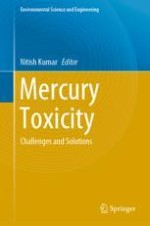2023 | OriginalPaper | Buchkapitel
11. Application and Development Strategies of Nano-Adsorbents on Mercury Remediation
verfasst von : Visakha Singh, Rabhya Asthana, M. Kiranmai Reddy, Hari Sharan Misra, M. Pradeep, Saladi Sri Kala Venkata Butchi Raju
Erschienen in: Mercury Toxicity
Verlag: Springer Nature Singapore
Aktivieren Sie unsere intelligente Suche, um passende Fachinhalte oder Patente zu finden.
Wählen Sie Textabschnitte aus um mit Künstlicher Intelligenz passenden Patente zu finden. powered by
Markieren Sie Textabschnitte, um KI-gestützt weitere passende Inhalte zu finden. powered by
